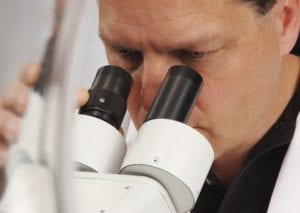The Pathological Diagnosis of Mesothelioma: New Recommendations

An international team of researchers says it is time to refine the pathological diagnosis of mesothelioma. They are recommending a list of changes they say could make the process more effective.
Mesothelioma is a deadly cancer caused by asbestos exposure. Under current pathology guidelines, it falls into just three categories.
But the research team says those guidelines do not give doctors enough information. They recommend updates to make the pathological diagnosis of mesothelioma more specific.
Understanding Mesothelioma Pathology
Pathologists study body tissue, fluids, and cells that are surgically removed. The pathological diagnosis of mesothelioma involves looking at cells under a microscope. Cells can then be put into a category.
About three quarters of mesothelioma cases are epithelioid. Epithelioid mesothelioma is the least aggressive and most responsive to treatment.
About 10 to 20 percent of mesothelioma tumors are sarcomatoid. This type is much harder to treat and the prognosis is not as good. Biphasic mesothelioma is the third type. It contains both epithelioid and sarcomatoid cells.
Knowing the subtype can help doctors choose the best mesothelioma treatment.
Toward a More Refined Pathological Diagnosis of Mesothelioma
The new report was commissioned by two international lung cancer groups. It included radiologists, surgeons, pathologists, biologists and oncologists.
The group says pathologists should pay more attention to the “architectural patterns” of mesothelioma cells. This refers to the arrangement of cells in a tumor. They say they should also be watching for subtle differences between cells.
Another recommended update to the pathological diagnosis of mesothelioma has to do with molecular data. If a patient has PD-L1 or BAP1 testing done, the team says that information should be in the pathology report. It should also be routinely included in clinical trial data.
To ensure there is plenty of information for pathologists to work with, the team says cell samples should come from at least three separate areas.
They also say subtype should not exclude people from clinical trials or chemotherapy.
Additional Recommendations for Pathologists
Other recommendations for refining the pathological diagnosis of mesothelioma include:
- Tumor boards should include a pathologist “to ensure appropriate treatment options are considered.”
- Standardization of mesothelioma imaging and terminology
- Further refining of subtypes based on their response to immunotherapy
- Routine reporting of “favorable/unfavorable histologic characteristics”
- Consider making “malignant mesothelioma in situ” a fourth category
The group recommends against screening for genetic mutations unless there is a family history of BAP1 syndrome.
Source:
Nicholson, AG, et al, “EURACAN/IASLC proposals for updating the histologic classification of pleural mesothelioma: towards a more multidisciplinary approach”, September 20, 2019, Journal of Thoracic Oncology, Epub ahead of print, https://linkinghub.elsevier.com/retrieve/pii/S1556086419332320





